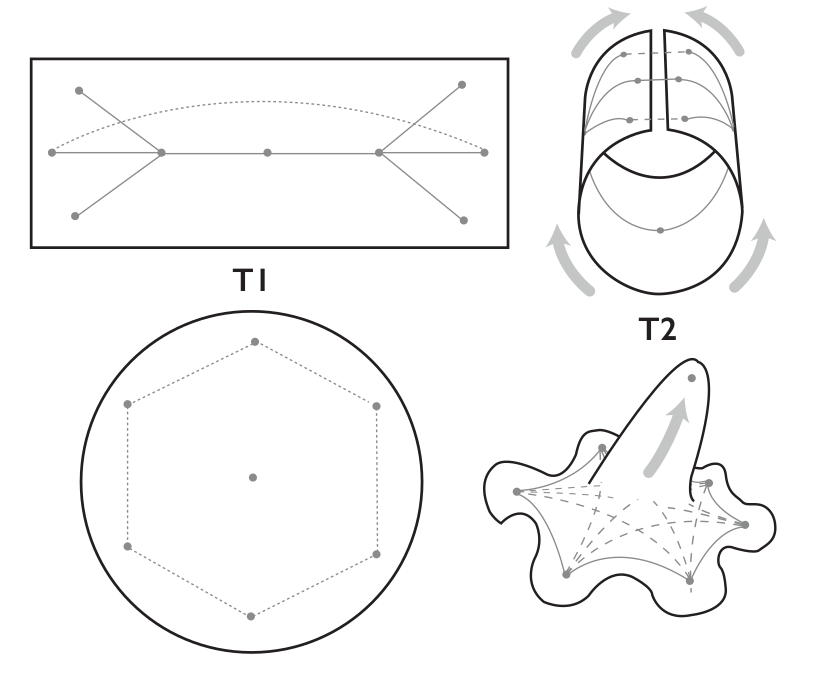Social Network Curvature
The Curved Geometry of Social Life: Manifolds of Opportunity underlying Networks of Interaction

Abstract: Recent research on social networks contrasts classical work that derives metrics from the discrete topology of network ties with emercomputationally learned continuous spaces consistent with current ties for predicting future ones. In this paper, we theorize the independent ontology and value of discrete network ties and curved manifolds built from them, where network topologies trace social interaction, and continuous manifolds the space of hidden and likely interactions. Then we introduce a unified, geometric characterization of system-level structure in social networks that simplifies description while improving prediction of system-level network processes. Specifically, we view nodes in graphs as being embedded in a latent manifold, where geometric curvature of the manifold shapes interaction patterns. Network regions embedded in positive curvature manifest dense thickets of ties through which information pools and cycles; regions embedded in negative curvature are characterized by sparse ties representing ridges over which information spreads and flows. In this way, curvature combines local and global perspectives, providing a continuous characterization of network structure that eliminates the need for discrete distinctions between roles and communities to enable accurate modeling of system-level processes like network evolution and information diffusion with increased accuracy. We develop statistical tests for network curvature estimation, show how they link and validate emerging approaches to curvature measurement in discrete mathematics and machine learning, and demonstrate the utility of our approach for characterizing social networks, predicting network evolution and deepening geometric understanding of social constraint using simulated and observed networks across domains of multi-ethnic community life, adolescent school interactions, and scientific innovation.